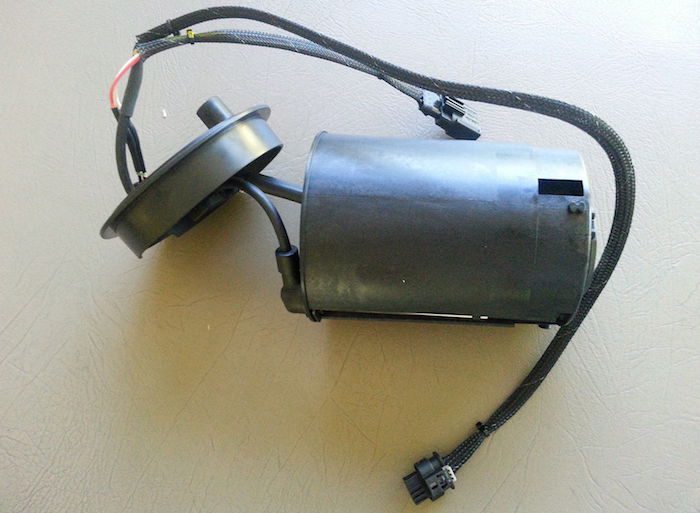
P203B Reductant Level Sensor Circuit Range / Performance
Content
- P203B Reductant Level Sensor Circuit Range / Performance
- OBD-II DTC Datasheet
- What does this mean?
- What is the severity of this DTC?
- What are some of the symptoms of the code?
- What are some of the common causes for the code?
- What are some steps to diagnose and troubleshoot a P203B?
- Related DTC discussions
- Need more help with a P203B code?
P203B Reductant Level Sensor Circuit Range / Performance
OBD-II DTC Datasheet
Reductant level sensor circuit out of performance range
What does this mean?
This is a generic powertrain diagnostic trouble code (DTC) and is commonly applied to OBD-II vehicles. Car brands may include, but are not limited to, BMW, Mercedes Benz, VW Volkswagen, Sprinter, Ford, Audi, Dodge, Ram, GMC, Chevrolet, Jeep, etc.
Did you know that the engine light comes on when the engine exhaust emissions are out of specification? The ECM (Engine Control Module) monitors and regulates dozens of sensors, valves, systems, etc. It basically acts as a built-in emission check station. It not only monitors what your engine is consuming, but more importantly for the manufacturer, what your engine is emitting into the atmosphere.
This is relevant here because for the most part reductant level sensors are present on diesel vehicles with a DEF (diesel exhaust fluid) storage tank. DEF is a urea solution used in diesel engines to burn exhaust gases, which in turn reduces overall vehicle emissions, which, as mentioned earlier, is one of the most important goals of ECM. The reductant level sensor informs the ECM of the level of DEF in the storage tank.
P203B is a DTC defined as "Reductant Level Sensor Circuit Range/Performance" which indicates unexpected electrical readings detected in the sensor circuit as identified by the ECM.
Reducing agent tank DEF: 
What is the severity of this DTC?
I would say that this is pretty minor code considering the possibilities. Basically, we are talking about a malfunction of a system that monitors what happens after it has already been burned and used. However, emission standards in most states / countries are quite strict, so it is advised to address this issue before it causes more damage to your vehicle, let alone the atmosphere!
What are some of the symptoms of the code?
Symptoms of the P203B diagnostic code may include:
- Incorrect DEF (Diesel Exhaust Fluid) level reading
- Exhaust emissions out of specification
- CEL (check engine light) on
- Excessive smoke
- Low or other DEF warning on instrument cluster.
What are some of the common causes for the code?
Reasons for this P203B engine code may include:
- Reductant level sensor defective
- Level sensor lever mechanically locked inside the storage tank
- Wrong liquid in DEF storage tank
- Electricity short circuit
What are some steps to diagnose and troubleshoot a P203B?
The first step in the process of troubleshooting any problem is to review technical service bulletins (TSBs) for known problems with a particular vehicle.
Advanced diagnostic steps become very vehicle specific and may require appropriate advanced equipment and knowledge to be performed accurately. We outline the basic steps below, but refer to your vehicle / make / model / transmission repair manual for specific steps for your vehicle.
Basic step # 1
Be sure to completely erase all active codes and test drive the vehicle before diagnosing any existing codes. This will clear any codes that remained active after repairs or other periodic, less important codes. After a test drive, re-scan the vehicle and continue diagnosing only with active codes.
Basic step # 2
I am sure that after you have owned your vehicle for a significant amount of time, you know where the DEF (Diesel Engine Exhaust Fluid) storage tank is. If not, then I saw them in the trunk as well as under the car. In this case, the filler neck of the storage tank should be easily accessible either in the trunk or next to the filler neck for fuel. First of all, make sure you differentiate it to avoid getting unwanted liquid into unwanted places. If you can check your level mechanically with a dipstick, do so. On the other hand, some vehicles have no other way to check the DEF level other than to direct the flashlight into the hole to visually see if there is a DEF there. You will want to top up anyway, especially if P203F is present.
Basic step # 3
Depending on the capabilities of your OBD2 code scanner / scanner, you can electronically monitor the sensor using it. Especially if you know the storage tank is full of DEF and the readings show something else. In this case, it is most likely that the reductant level sensor is defective and needs to be replaced. This can be tricky considering the fact that it will be installed on a tank. When replacing a sensor, make sure you catch any DEF that comes out.
Basic step # 4
If you can easily access the reductant level sensor connector, make sure it provides a good electrical connection. In addition, it is always advisable to consult the manufacturer's service data for specific values and testing procedures for a level sensor to ensure it is defective before replacing it. You will most likely need a multimeter for this, as resistance tests may be required. Compare the actual values available with the manufacturer's desired values. If the values are outside the specification, the sensor must be replaced.
NOTE: Always follow the manufacturer's instructions for when to disconnect the battery, precautions, etc.
Basic step # 5
Inspect the reductant level sensor wiring harness for damage or abrasion, this may send erroneous readings to the ECM and may force you to replace the sensor when not necessary. Any exposed wires or corrosion must be repaired before proceeding. Make sure the harness is secure and does not come into contact with moving parts.
This article is for informational purposes only and technical data and service bulletins for your specific vehicle should always take priority.
Related DTC discussions
- There are currently no related topics in our forums. Post a new topic on the forum now.
Need more help with a P203B code?
If you still need help with DTC P203B, post a question in the comments below this article.
NOTE. This information is provided for informational purposes only. It is not intended to be used as a repair recommendation and we are not responsible for any action you take on any vehicle. All information on this site is protected by copyright.
